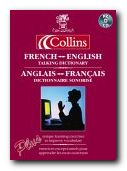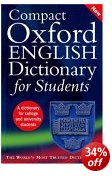learn how words are formed, written, and used
Better Wordpower is a popular language guide based on a simple notion – that a deeper grasp of language and the way words are used is the sure route to more efficient and effective communication. It offers several different approaches to what Reader’s Digest used to call Improve your Wordpower. It begins by showing you how to use dictionaries, encyclopedias and other language books effectively.
 Then it goes through the basic rules of spelling; lists of words which are commonly confused (affect and effect for instance); a list of foreign words and phrases; and a list of antonyms – words which mean the opposite, as in eager and apathetic or winsome and repulsive.
Then it goes through the basic rules of spelling; lists of words which are commonly confused (affect and effect for instance); a list of foreign words and phrases; and a list of antonyms – words which mean the opposite, as in eager and apathetic or winsome and repulsive.
One of the most useful sections for increasing your wordpower is that listing prefixes and suffixes (what they call ‘word parts’) which help in the formation of new terms (auto- self, or automatic – as in autobiography, automobile or -ectomy surgical removal – as in vasectomy, appendectomy).
This is followed by an explanation of words used in common areas of human activity – animal life, architecture, art, astronomy, botany, computers, diseases, finance, geology, language, mathematics, music, physics and chemistry, psychology and psychiatry, shipping, and weather.
There are even illustrations in these sections, making the book like a mini-encyclopedia. Some of these categories seem somewhat arbitrary, but at least they point the user in the direction of intellectual categories – which is one of the prime purposes of the book.
The compilation ends with another very useful list of difficult, obscure, and what they call ‘hard’ words. These range from the reasonably well-known (alopecia ‘baldness’) to more abstruse terms such as (loricate ‘having an armour of scales or plates’).
All in all, it’s an accessible and readable guide which helps you through some of the most common pitfalls and complications of the English language. Ideally suitable for beginners, users in the classroom, or self-improvers of any kind.
© Roy Johnson 2005
Janet Whitcut, Better Wordpower, Oxford: Oxford University Press, 2000, pp.329, ISBN: 0192801082
More on dictionaries
More on language
More on literary studies
More on grammar

